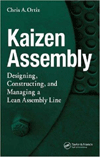Approximately one-fourth of the robots sold in North America this year were for assembly, dispensing and material handling applications involving parts weighing less than 10 pounds. For many of these applications, the robot of choice is the SCARA, or selective compliance assembly robot arm.
Brian Jones, sales planning section manager with DENSO Robotics (Long Beach, CA), says it all: "SCARA robots have been the bread and butter of assembly applications."
SCARAs have four axes of motion. The first two are radial joints in the horizontal plane. These allow the arm to swivel about its base and fold in on itself like a folding screen. The third, or Z, axis produces vertical motion, while the fourth, or Θ, axis produces rotational motion around the Z axis. "In some cases, you can add a...bend at the end of the Z axis, but that's not common," says Jack Justice, market segment manager for general robotics at Motoman Inc. (West Carrollton, OH).
A SCARA's work envelope is cylindrical. Models are available with a horizontal reach ranging from 250 millimeters to more than a meter, and a vertical reach ranging from 100 to 800 millimeters. Payload capacities vary from 2.5 to 25 kilograms.
Speed is a major advantage of SCARAs. The "cycle time" for any small robot is often reported as the time needed to move 1 inch up, 12 inches across, 1 inch down, and back again. Some SCARAs can complete this standard move in less than 0.4 second with a repeatability of ±0.008 millimeter. "A six-axis robot would be unable to move that fast, just because it has more motors to coordinate," says Jones.
Compared with Cartesian robots, SCARAs require less table or floor space, but more headroom. A SCARA's central axis is typically mounted to the floor or table, but the robot can also be mounted to the wall or ceiling. "If you mount the robot over a conveyor, instead of next to it, you can save even more space," says John C. Clark, national sales manager for EPSON Robots (Plano, TX).
SCARAs excel in applications in which they pick something up with a straight vertical motion, transfer it horizontally, and place it back down with a straight vertical motion, without tilting the part. Many assemblers use SCARAs to pick parts off a conveyor and load them into pallets or packaging. With machine vision, SCARAs can scan randomly placed parts and identify those in the correct orientation or those with defects, even as the parts are moving on a conveyor.
SCARAs are also good at vertically oriented processes, such as screwdriving and dispensing. "SCARAs are good for dispensing adhesives," says Justice. "You can go up and down slopes, but you can't turn the dispense head 90 degrees and put adhesive along the side of something."
When specifying SCARAs, engineers should first determine the robot's payload, which includes the weight of the gripper as well as the parts it will carry. Next, engineers should establish how far from its central axis the robot will need to carry the load, because that affects how much the robot can carry.
"You can easily hold a 5-pound weight close to your chest. But, if you hold the same weight straight out, you have to work a lot harder," Clark explains. "The same is true for a robot. The farther off center it must reach, the less payload it can carry. Even if your total payload is only 5 kilograms, you may need a robot with a 10-kilogram capacity if the arm has to travel far."
Other important specifications are cycle time, repeatability, work envelope and control system. The work environment is also an issue. SCARAs can be configured for static-safe operation, Class 10 clean rooms and humid, dusty environments.


